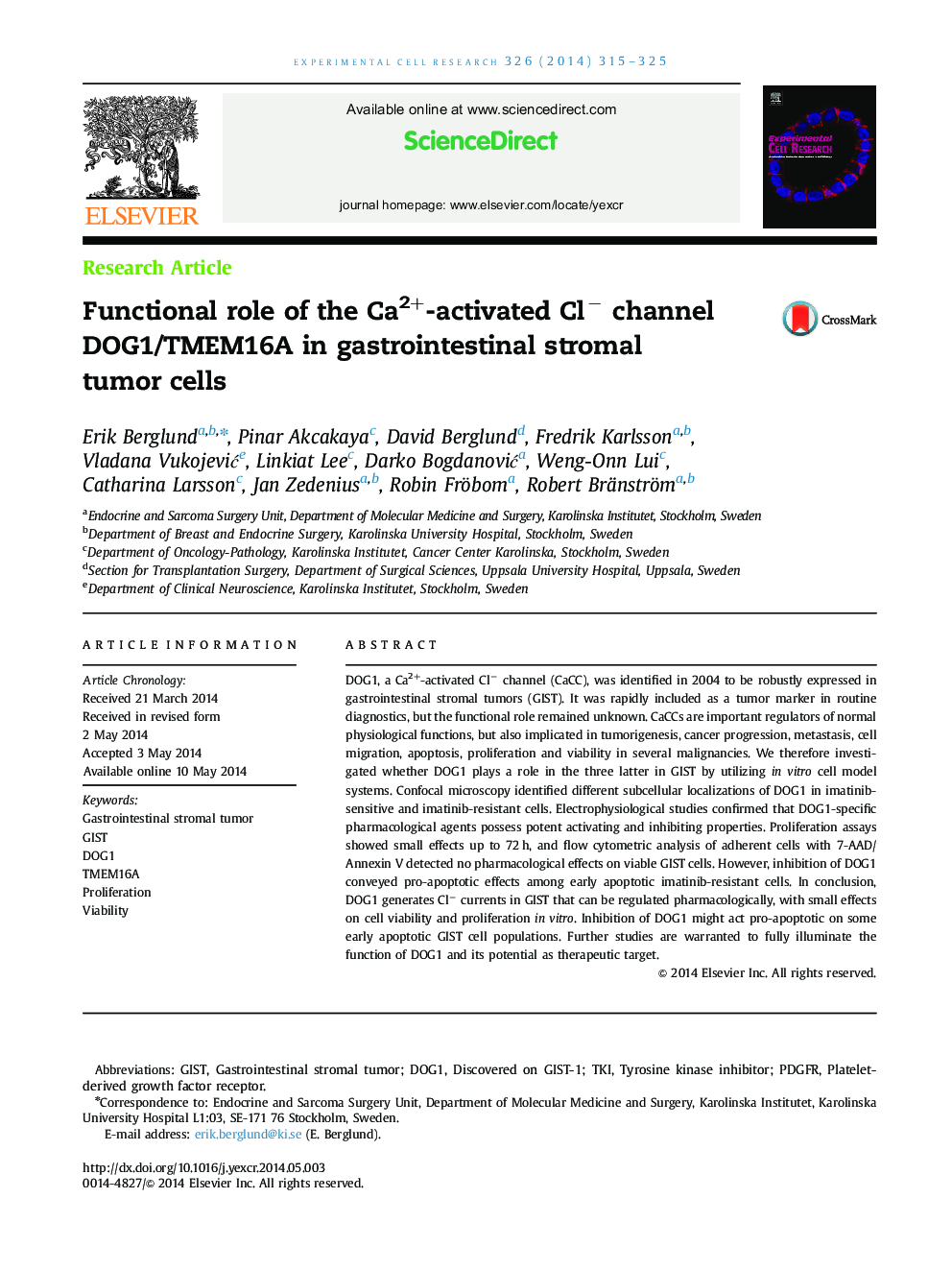| Article ID | Journal | Published Year | Pages | File Type |
|---|---|---|---|---|
| 2130235 | Experimental Cell Research | 2014 | 11 Pages |
•Subcellular DOG1 localization varies between GIST cells.•DOG1 in GIST is voltage- and Ca2+-activated.•Known TMEM16A modulators, like A01 and Eact, modulate DOG1.•DOG1 has small effects on cell viability and proliferation in vitro.•DOG1 impact early apoptotic GIST cells to undergo late apoptosis.
DOG1, a Ca2+-activated Cl− channel (CaCC), was identified in 2004 to be robustly expressed in gastrointestinal stromal tumors (GIST). It was rapidly included as a tumor marker in routine diagnostics, but the functional role remained unknown. CaCCs are important regulators of normal physiological functions, but also implicated in tumorigenesis, cancer progression, metastasis, cell migration, apoptosis, proliferation and viability in several malignancies. We therefore investigated whether DOG1 plays a role in the three latter in GIST by utilizing in vitro cell model systems. Confocal microscopy identified different subcellular localizations of DOG1 in imatinib-sensitive and imatinib-resistant cells. Electrophysiological studies confirmed that DOG1-specific pharmacological agents possess potent activating and inhibiting properties. Proliferation assays showed small effects up to 72 h, and flow cytometric analysis of adherent cells with 7-AAD/Annexin V detected no pharmacological effects on viable GIST cells. However, inhibition of DOG1 conveyed pro-apoptotic effects among early apoptotic imatinib-resistant cells. In conclusion, DOG1 generates Cl− currents in GIST that can be regulated pharmacologically, with small effects on cell viability and proliferation in vitro. Inhibition of DOG1 might act pro-apoptotic on some early apoptotic GIST cell populations. Further studies are warranted to fully illuminate the function of DOG1 and its potential as therapeutic target.
